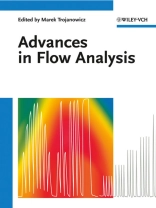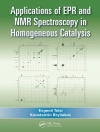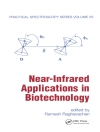This first book to cover different injection techniques not only provides a comprehensive overview of methodologies and instrumentation, it also covers recent advances in flow method analysis, with an appendix listing additional databases, instrumentation and methods on the Internet.
A definite must-have for every chemist working in this field.
Inhaltsverzeichnis
Introduction XIX
List of Contributors XXV
I Methodologies and Instrumentation 1
1 Theoretical Aspects of Flow Analysis 3
Fernando A. Iñón and Mabel B. Tudino
1.1 Introduction 3
1.2 Classification of Flow Systems. Fundamentals 4
1.3 Dispersion in Flow Injection Analysis: From the Movement of Fluids in Open Tubes to Controlled Dispersion 7
1.4 The Measurement of Dispersion 15
1.5 Contribution of the Different Components of a Flow System to Dispersion 21
1.6 Design Equations 29
1.7 Concluding Remarks 38
References 39
2 Injection Techniques in Flow Analysis 43
Víctor Cerdà and José Manuel Estela
2.1 Introduction 43
2.2 Continuous Flow Analysis (CFA) 44
2.3 Segmented Flow Analysis (SFA) 45
2.4 Flow Injection Analysis (FIA) 46
2.5 Sequential Injection Analysis (SIA) 53
2.6 Multicommutated Flow Injection Analysis (MCFIA) 61
2.7 Multisyringe Flow Injection Analysis (MSFIA) 63
2.8 Multipumping Flow Systems (MPFS) 69
2.9 Combined Injection Methods 70
2.10 Concluding Remarks 73
References 74
3 Application of Moveable Suspensions of Solid Particles in Flow Analysis 79
Marek Trojanowicz
3.1 Introduction 79
3.2 Solid Microparticles Used in Suspensions in Flow Analysis 81
3.3 Handling Suspensions of Particles in Flow Systems 82
3.4 Detection Methods Employed in Flow Systems with Particle Suspensions 86
3.5 Renewable Columns in Flow Systems 91
3.6 Microfluidics with Processing of Particle Suspensions 94
3.7 Nanoparticles in Flow Systems 98
3.8 Conclusions 100
References 101
4 Batch Injection Analysis 107
Christopher M.A. Brett
4.1 Introduction 107
4.2 Theory of Batch Injection Analysis 108
4.3 Experimental Aspects – Cell Design and Detection Strategies 110
4.4 Applications of Batch Injection Analysis 114
4.5 Comparison of BIA with Flow Injection Techniques 120
4.6 Future Perspectives 121
References 121
5 Electroosmosis-Driven Flow Analysis 127
Petr Kubán, Shaorong Liu, and Purnendu K. Dasgupta
5.1 Introduction 127
5.2 Pumping Systems 128
5.3 EOF Pumping Systems 133
5.4 EOF Injection Methods Utilized in FIA, SIA and Micro Total Analysis Systems (m-TAS) 142
5.5 Applications of EOF-Driven Pumping in Flow Analysis 143
5.6 Future Prospects 145
References 145
6 Flow Analysis in Microfluidic Devices 149
Manabu Tokeshi and Takehiko Kitamori
6.1 Introduction 149
6.2 Continuous Flow Chemical Processing in Microfluidic Devices 149
6.3 Flow Injection Analysis in Microfluidic Devices 159
6.4 Perspectives 163
References 165
7 The Concept of Multi-commutation in Flow Analysis 167
Mário A. Feres, Elias A.G. Zagatto, João L.M. Santos, and José L.F.C. Lima
7.1 Introduction 167
7.2 Concepts 169
7.3 The Discretely Operated Devices 171
7.4 System Design 172
7.5 Tandem Streams 174
7.6 Processes Involving Multi-Commutation 175
7.7 Applications 180
7.8 Conclusions 181
7.9 Trends 181
References 192
8 Advanced Calibration Methods in Flow Injection Analysis 203
Pawe? Kóscielniak
8.1 Introduction 203
8.2 Advanced Calibration Procedures 205
8.3 Advanced Calibration Concepts 214
8.4 Trends and Perspectives 219
References 221
9 Multicomponent Flow Injection Analysis 227
Javier Saurina
9.1 Introduction 227
9.2 Principal Strategies for Multicomponent Analysis 229
9.3 Trends and Perspectives 254
References 256
10 Flow Processing Devices Coupled to Discrete Sample Introduction Instruments 265
M. Valcárcel, S. Cárdenas, B.M. Simonet, and R. Lucena
10.1 Introduction: The Problem of Sample Treatment 265
10.2 Roles of Flow Processing Devices 265
10.3 Ways of Coupling Flow Processing Devices to Discrete Sample Introduction Instruments 266
10.4 Coupling Flow Processing Devices to Gas Chromatographs 267
10.5 Coupling Flow Processing Devices to Liquid Chromatographs 271
10.6 Coupling Flow Processing Devices to Capillary Electrophoresis Equipment 274
10.7 Future Prospects 283
References 283
11 On-line Sample Processing Methods in Flow Analysis 291
Manuel Miró and Elo Harald Hansen
11.1 Introduction 291
11.2 On-line Sample Pretreatment Protocols for Aqueous and Air Samples 292
11.3 On-line Processing of Solid Samples: Leaching/Extraction Methods 306
11.4 Trends and Perspectives 307
References 311
12 Flow Analysis and the Internet – Databases, Instrumentation, and Resources 321
Stuart J. Chalk
12.1 Introduction 321
12.2 Databases 321
12.3 Journals 323
12.4 Instrumentation 330
12.5 Standard Methods 330
12.6 Other Useful Websites 337
12.7 Future Directions 339
References 341
II Advances in Detection Methods in Flow Analysis 343
13 Luminescence Detection in Flow Analysis 345
Antonio Molina-Díaz and Juan Francisco García-Reyes
13.1 Introduction 345
13.2 Luminescence Detection in Continuous Flow Systems 346
13.3 Recent Trends and Perspectives 374
References 377
14 Enzymes in Flow Injection Analysis 395
Robert Koncki, Lukasz Tymecki, and Beata Rozum
14.1 Introduction 395
14.2 Enzyme Substrates as Analytes 396
14.3 Methods Based on Enzyme Activity Measurements 412
14.4 Conclusions 416
References 417
15 Flow Potentiometry 425
M. Conceição B.S.M. Montenegro and Alberto N. Araújo
15.1 Introduction 425
15.2 Background Concepts 425
15.3 Electrode Developments and Detector Cell Designs 428
15.4 Flow Analytical Techniques Based on Potentiometry 436
15.5 Trends and Future Prospects 443
References 443
16 Flow Voltammetry 455
Ivano G.R. Gutz, Lúcio Angnes, and Andrea Cavicchioli
16.1 Introduction 455
16.2 Voltammetric/Amperometric Flow Analysis 456
16.3 Strategies for Improving Selectivity, Sensitivity, and Durability 467
16.4 Trends and Perspectives 472
References 473
17 Affinity Interaction Profiling of Protein–Protein and Protein–Ligand Interactions Using Flow Analysis 483
J. Kool, N.P.E. Vermeulen, H. Lingeman, R.J.E. Derks, and H. Irth
17.1 Introduction 483
17.2 Profiling of Noncovalent Protein–Protein and Protein–Ligand Interactions Based on Mass Spectrometry Flow Analysis 485
17.3 Integration of Flow Analysis and High-Performance Liquid Chromatography for the Bioaffinity Screening of Mixtures 490
17.4 Conclusions 502
References 503
18 Atomic Spectroscopy in Flow Analysis 511
José L. Burguera and Marcela Burguera
18.1 Introduction 511
18.2 Flame Atomic Absorption Spectrometry 512
18.3 Sample Dilution 519
18.4 Electrothermal Atomic Absorption Spectrometry 520
18.5 Atomic Fluorescence Spectrometry 527
18.6 Conclusions and Further Developments 531
References 532
19 Flow Injection Mass Spectrometry 545
Maria Fernanda Giné
19.1 Introduction 545
19.2 FIA-MS Sample Introduction Devices 550
19.3 Flow Systems Coupled to External Ionization Sources – MS 553
19.4 Conclusions 566
References 566
III Applications 575
20 Environmental Applications of Flow Analysis 577
Shoji Motomizu
20.1 Introduction 577
20.2 Analysis of the Aquatic Environment by Flow Methods 577
20.3 Analysis of an Atmospheric Environment by Flow Methods 590
20.4 Analysis of the Geosphere Environment by Flow Methods 594
20.5 Future of Environmental Analysis 595
References 596
21 Flow Methods in Pharmaceutical Analysis 601
J. Martínez Calatayud and J.R. Albert-García
21.1 Introduction 601
21.2 Analysis of Pharmaceutical Formulations 602
21.3 Flow Process Analyzers in the Pharmaceutical Industry 626
References 635
22 Industrial and Environmental Applications of Continuous Flow Analysis 639
Kees Hollaar and Bram Neele
22.1 Introduction 639
22.2 Overview of Environmental and Industrial Fields 640
22.3 Applications and Their Ranges 645
22.4 Development of Flow Analysis Applications 658
22.5 Trends in Continuous Flow Analysis 659
References 661
Index 663
Über den Autor
Marek Trojanowicz was born in 1944 in Warsaw. He has obtained M.Sc. (1966), Ph.D. (1974) and D.Sc. (1981) degrees in Department of Chemistry, University of Warsaw in the field of Analytical Chemistry. Since 1989 he is head of the Laboratory for Flow Analysis and Chromatography in University of Warsaw. Since 1991 he is titular professor of chemistry in Department of Chemistry, University of Warsaw, and since 1992 also professor of Chemistry in Department of Analytical Chemistry in the Institute of Nuclear Chemistry and Technology in Warsaw.












